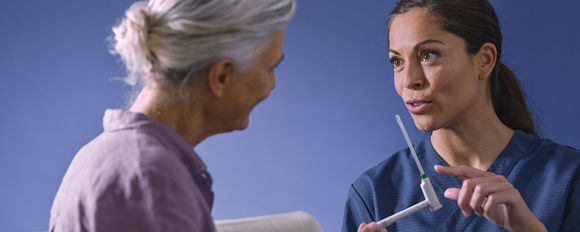
A good start is the key to success
Each person is unique, consequently there is not just one answer on how to best learn to perform IC. Some may experience a feeling of unease and anxiety when you are about to get started. But don't worry - most people get past that feeling as soon as they have tried it a few times and realise it doesn't hurt.
Finding a Routine That’s Best For You
If you have been told you need to do intermittent self-catheterisation, it is most probably because your bladder does not empty completely, or not at all. Whatever the cause is, finding a good routine will help you in your daily life and make catheterisation successful.
If you have been hospitalised for some time, it is not always necessary for you to continue to follow the catheterisation routines from the hospital. But if you want to create your own routines, always check with your healthcare provider.
How often you need to catheterise varies due to indication, size of the bladder and intake of fluid. Your healthcare provider has probably given you some advice. However, it is important that you try and learn to listen to your body and make sure that you don't leave it too long in-between catheterisations. Your bladder should not be too full. It is better to empty the bladder too many times than the opposite.
Be sure to follow the instructions you have received for preparing and performing catheterisation. Also, take the time to study the instructions for the catheter. At the end of the catheterisation, always make sure your bladder is completely empty, by withdrawing the catheter very slowly after you have finished.
If you have difficulties catheterising, there are accessories that are made to simplify and support the procedure. Ask your healthcare provider what is available.
-
Tips and Tricks for IC
By learning how self-catheterisation can support you, you will be able to continue to live your life to the fullest. Here are some tips and tricks for IC.

-
User Stories Bladder
We spoke to some of our users who share their stories on how they live and cope with bladder problems and intermittent catheterisation.

-
Intermittent Catheterisation (IC)
Intermittent Catheterisation (IC) is the next best way to urinate, the way that mostly mimics the natural way of urinating. In this section you can watch animations to understand the whole procedure of IC, download catheterisation instructions and more.
